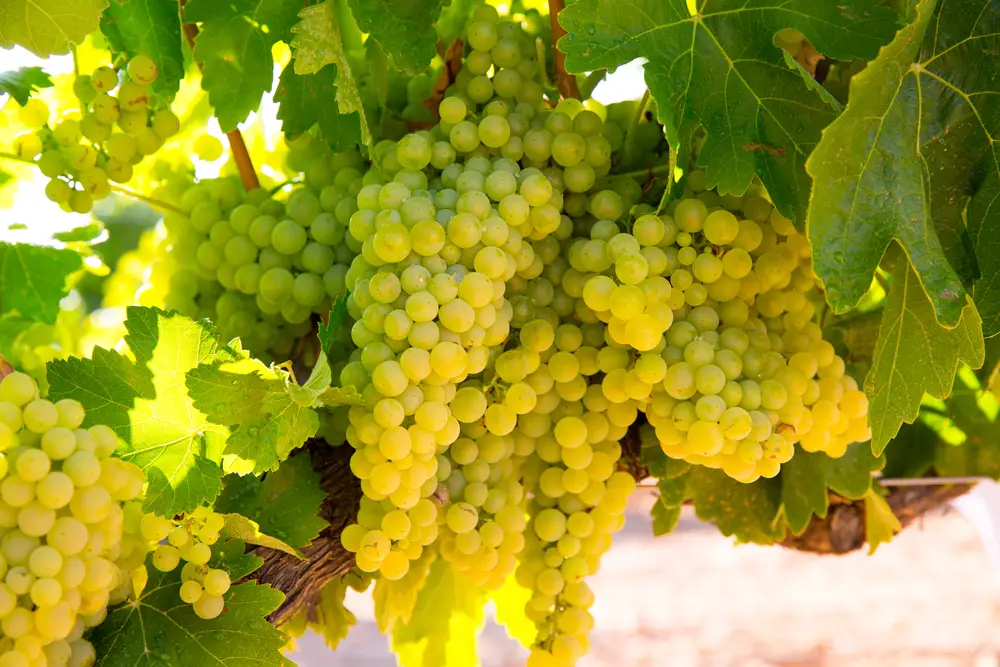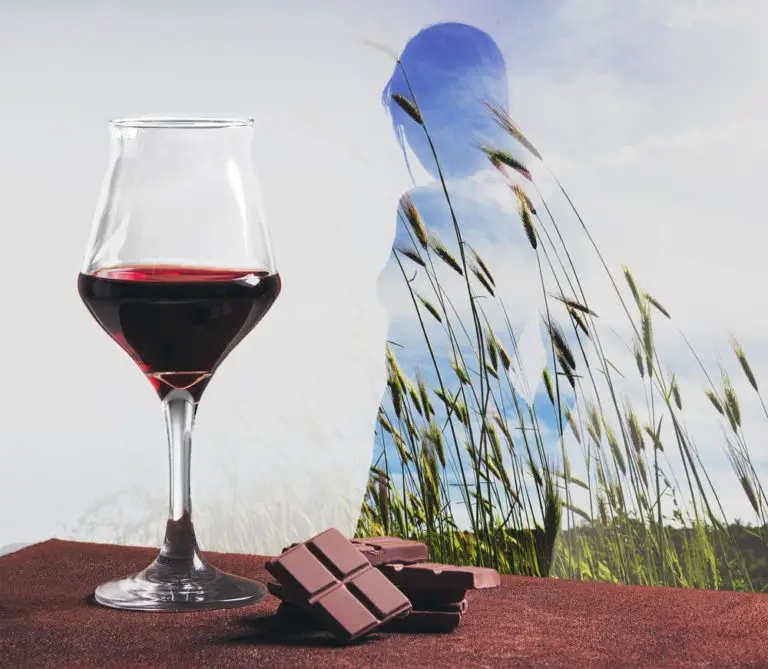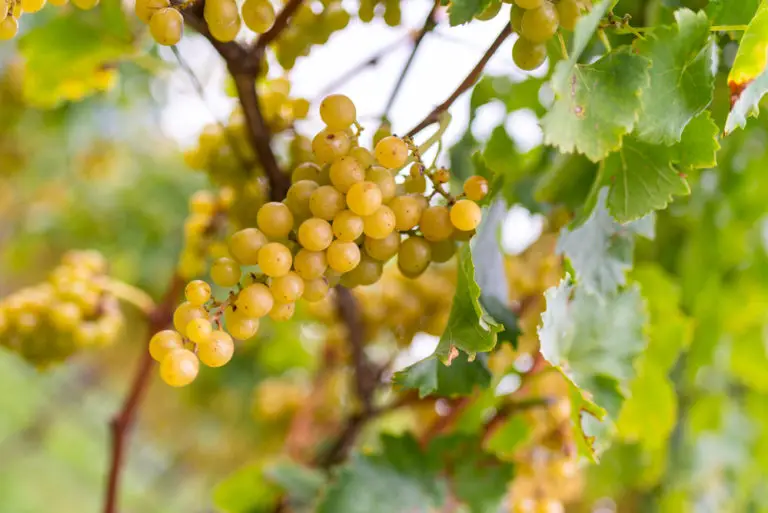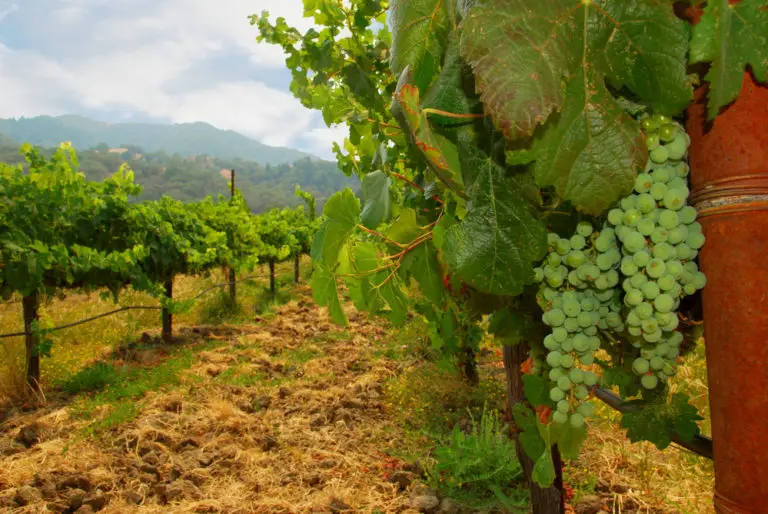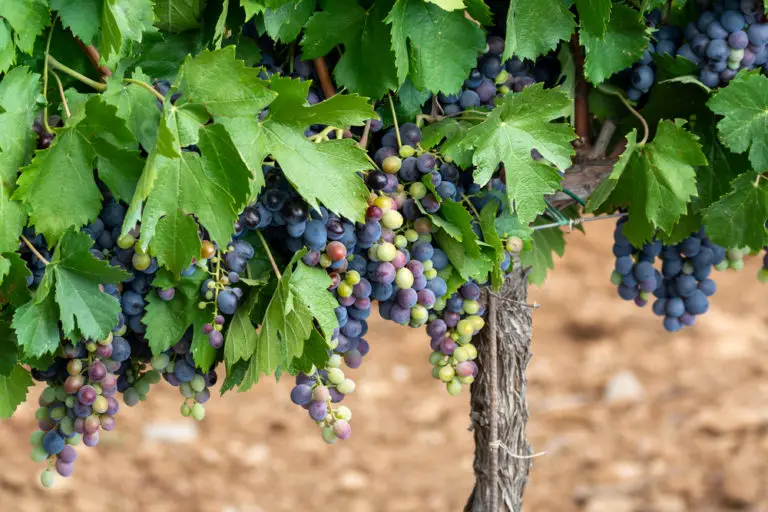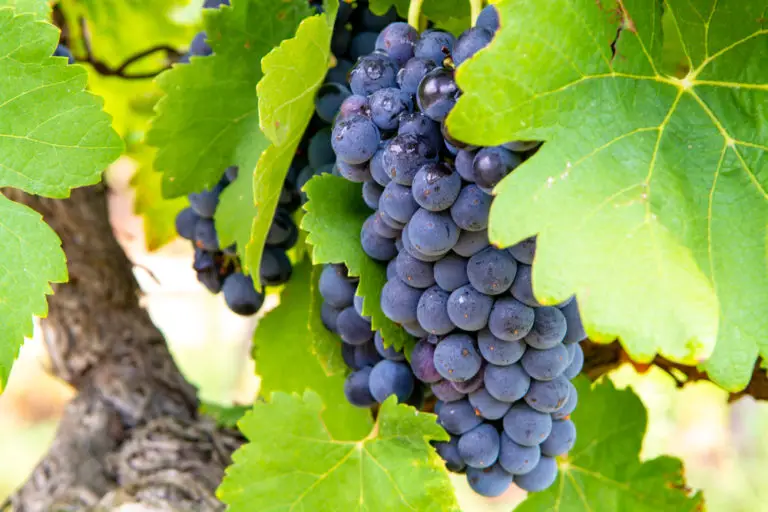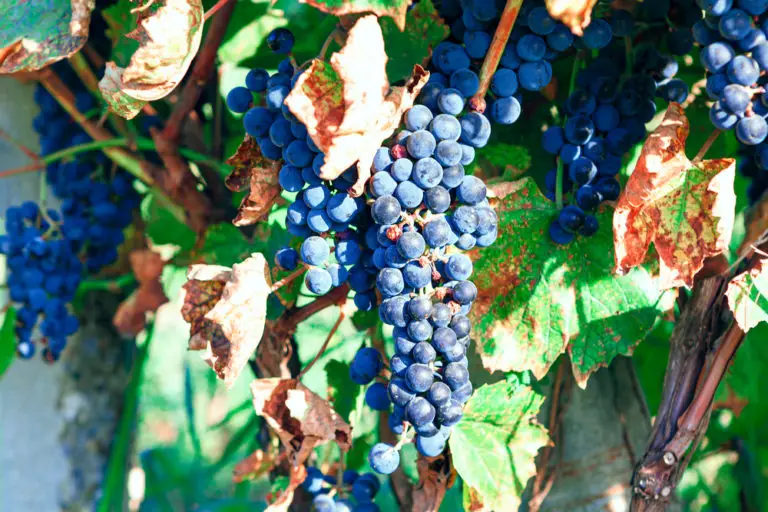Chardonnay: The Beginners Guide (2024)
Chardonnay is one of the World’s most popular white grapes. It is made in a wide range from rich, creamy wines aged in oak to lean, sparkling Blanc de Blancs. This wine is made from green-skinned grapes which can adapt to different climates. It is beloved because there is something for everyone.
- What is Chardonnay?
- Known Regions for Chardonnay
- Popular Blends of Chardonnay
- How to Enjoy Chardonnay?
- How is Chardonnay Made?
- History of Chardonnay
- Alternatives for Chardonnay
What is Chardonnay?
Due to the ease of growing it in many climates and ease of work within the cellar, Chardonnay pronunciation shaa·duh·nay is known as a winemaker’s grape. It can be made light and elegant to be buttery and full-bodied. It can taste different based on the region and winemaking process.
Typically, a Chardonnay descriptor is a wine with moderate acidity and alcohol which can range from dry, medium- to full-bodied. France is the most famous region for making the most coveted and expensive Chardonnay wine. It has also made its way to Canada, where it has become the most widely planted white variety of grapes.
There are different ways in which Chardonnay is made. It is sometimes oaked and sometimes unoaked. Expensive Chardonnays from California, Burgundy, and Australia (among others) are usually oaked, while Chablis and entry-level wines from Chile, New Zealand, and other parts of France are unoaked.
Chardonnay vs. Pinot Grigio vs. Sauvignon Blanc vs. Riesling
The most obvious difference between chardonnay vs pinot grigio is the color of the grape’s skin. Pinot Grigio has a greyish-blue or a brownish-pink hue skin, while Chardonnay wine color comes from the green-skin of the grapes. Pinot Grigio is dry, light-bodied, and zesty, while Chardonnay characteristics are generally defined as dry, bold & full-bodied palate.
When it comes to comparing Chardonnay vs sauvignon blanc, Chardonnay is a medium to full bodies-wine while Sauv Blanc is lighter bodied. Chardonnay flavors are melon, pear, apple, peach, and pineapple. Sauvignon blanc is mostly citrus, kiwi, jalapeno pepper, fresh herbs, and gooseberry. Different climates and locations can change the taste of both wines.
Comparing Chardonnay vs Riesling: Both are high acidity wines as both are grown in cooler climates. Riesling has zingier notes of pear, apple, and citrus fruits, while whole chardonnay has more tropical characters. Riesling is not so famous because it lacks Chardonnay’s commercial appeal.
Chardonnay Characteristics
Chardonnay grapes can be grown in any climate, and this characteristic of chardonnay makes it one of the favorite varieties for winemakers. It gives a creative license to producers to make it elegant and light or buttery and full-bodied.
Chardonnay’s taste can vary depending on how and where it is grown. A typical red Chardonnay would be a dry, medium- or full-bodied wine with moderate alcohol and acidity. An average chardonnay alcohol percentage in a glass of wine is 11 percent to 13 percent alcohol. Chardonnay ABV of a bottle can range from as little as 5.5 percent to as much as around 20 percent.
Sometimes winemakers prefer to oak them while others keep them unoaked. Usually, oaked wines are more expensive than unoaked wines. Oaked wines often go through full or partial MLF while in the barrel. It is allowed to contact the lees (dead yeast). MLF produces a wine that is the stylistic opposite of unoaked Chardonnay and provides it with a round creamy texture from micro-oxygenation.
Chardonnay Taste Profile
Chardonnay’s taste can vary from wine to wine. Its primary flavors can swing from chalky minerality and lemon zest to baked fruits like pineapples and apples. Climate and harvest dates are the reasons for different tastes in Chardonnay wine. In warmer climates and late harvests, the grapes lose acidity and are more sugary. It gives it richer and riper fruits. While, in cooler climates or early harvests, the fruits are more citrus.
There are some secondary flavors or notes of the Chardonnay profile that come along with the winemaking process. When the wine is oaked, it would have flavors of coconut, vanilla, and baking spices. The flavors vary depending on the origin and shape of the wood, toast level, and length of contact with oak.
Chardonnay Ageability
Chardonnay, like many other wines, gets better with age. But, it gets better only to a certain extent, as it will gradually spoil, no matter how well you preserve it. Vintages can be aged longer, but most Chardonnays will only improve for up to the first five years of aging. You will rarely find a good Chardonnay for drinking that is old.
Like any other wine, the key to aging Chardonnay depends on how long the wine can be aged before it can be consumed. Generally, most Chardonnay’s are aged for up to 2 years before they are released from the shelves. Only a few are aged longer.
In the most natural form, Chardonnay should be aged for another year at most for drinking. It will preserve the wine’s fruitiness and freshness. Any further aging will dull the effects and make it taste mellower.
After eight years, only well-made vintage Chardonnays from colder regions will survive. But, it will also not have the same freshness and fruitiness. It will rather have an extremely nutty and toasty flavor with a creamy texture.
Generally, if you are looking for a crispy, tropical wine, then you must age the wine as little as possible. However, if you want a smooth and sweet dessert wine with some spice, you can consider aging Chardonnay. It will be best if you go for an oaked vintage to get that extra aging benefit.
Known Regions for Chardonnay
As previously mentioned, Chardonnay varietal can be grown in any region and weather. The grapes from the colder regions will produce dry wine with citrus, green fruit, and vegetal notes. The one from the warmer region will have tastes ranging from white peach and melon to tropical fruits and figs. Some of the famous regions for producing Chardonnay ingredients are:
- France: The most pricey and loved Chardonnay wine ingredients come from Burgundy, the noncontiguous region in eastern France. Chardonnay France is fuller-bodied wines that are often aged in small barrels to give them nuanced flavors of tropical fruits, oak, spice, and citrus. The wine from the southernmost area in Burgundy, Mâconnais, is light and fruity. It is not oaked, and the most famous sites are Mâcon and Pouilly-Fuissé.
- Italy: The first DOC Chardonnay region in Italy was Alto Adige. The Chardonnays produced here are balanced and medium-bodied, with notes of bread, stone fruits, and melons. The wine from here found its way into wines like Friuli, Lombardia, and Trentino. Cooler parts of Piemonte and Tuscany produce crisp, even-keeled Chardonnays.
- USA: Sonoma, Napa, Russian River, and Carneros are the places that produce most white Chardonnays wine in the United States. Its style can vary from savory, herbal notes to full-bodied butterballs with ripe tropical fruit flavors.
- Chile: Chile is known to produce some remarkably affordable premium wines and everyday wine. Wines from here have the taste of bananas and melons, plus acidity from the wine region cool Pacific breezes. Many of them are oaked, giving them creamy finishes and toasty flavors.
Argentina, Australia, and New Zealand are some other countries that are famous for producing some excellent Chardonnay red wines.
Popular Blends of Chardonnay
Chardonnay is used as blends in many wines. Here is a list of some of the most popular types of Chardonnay blends:
- Champagne – This might be surprising, but this quintessential French wine is a blend. It is made using grapes grown throughout the regions and consists of Chardonnay, Pinot Meunier, and Pinot Noir. Pinot Meunier gives the wine an intense bouquet while Pinot Noir adds fruit, powerful aroma, and structure. Chardonnay is responsible for adding delicacy to the Champagne. This blend is best enjoyed with light fish dishes, cheeses, and fruits.
- Soave – Soave is a medium-bodied wine that has notes of almonds, lemon, and sometimes creamy, if oaked. It has up to 70% Garganega, and the rest is Trebbiano, Chardonnay, and Pinot Blanc.
- Cava – This one is a classic-style sparkling wine. It has notes of granite, white peach, and lemon. Macabeu, Parellada, Xarello, and Chardonnay are blended to make this wine.
- Red Burgundy – Red Burgundy is a blend of Pinot Noir (minimum of ~85%), Gamay, Pinot Gris, Pinot Blanc, and Chardonnay. It is a light-bodied wine having notes of peony, clove, raspberry, and cherry.
- White Burgundy – This medium-bodied white wine is a Chardonnay and Aligote blend. It had notes of apple, cream, lemon, and chalk.
How to Enjoy Chardonnay?
To enjoy any wine, it must be served in an ideal way. It means that every wine has to be served at the right temperature so that the flavor comes out to be perfect. It should be served in the right stemware that allows the proper aeration of the drink, as required.
Also, wine should always be paired up with the right kind of food. The taste of wine or the food should not be impacted when they are paired up together. Let us take a look at the best way to drink Chardonnay.
Food Pairings
The thumb rule of drinking Chardonnay is to pair it with food that you might put butter on often. Some Chardonnay wine pairing is:
- Veal
- Pasta and pasta salads, especially with creamy sauces
- Seafood with butter and brown-butter sauces
- Cream soups
- Sage-butter chicken
- Vegetables
- Halibut
- Turkey (with an unoaked chardonnay)
- Polenta
- Shellfish that you might put butter on, like crab, lobster, or shrimp
- Chicken, especially baked chicken, fried chicken, grilled chicken, or chicken with a cream sauce
- Grilled seafood of most kinds
- Grilled and roasted salmon
Some flavors that go along with Chardonnay are Ginger, Mustard, Tarragon, Oyster and hoisin-sauce dishes, Corn, Camembert cheese, Risotto, Avocado, and Squash.
Temperature
There are different temperatures at which white wines are served. Some are supposed to be served chilled, while others should be kept out of the fridge for a few minutes before serving. Chardonnay should be ideally served at 50 degrees Fahrenheit, and it must be chilled for 30 minutes before consumption.
Stemware
Chardonnay should be served in the traditional style white wine glass. It is perfect for serving young, fresh wine. The narrow rim concentrates the aromas in the nose. The smaller bowl size keeps the wine colder than the large bowls used for reds.
It goes well in more upright, “U” shaped glasses that are smaller than a Pinot Noir glass. It would help you enjoy the sweetness of the wine with every sip. You can use the same glass for serving other wines like Pinot Blanc, Viognier, Pinot Grigio, and Chenin Blanc.
How is Chardonnay Made?
Chardonnay is made just like any other white wine. There are certain twists and turns at every step, let us have a look at the Chardonnay winemaking process:
Harvesting
Harvesting of Chardonnay grapes is done in the early morning when grapes are cool. They are transferred to the winery in bins or truck beds as soon as they are harvested from Chardonnay Vineyard. Within a few hours, the juice and pulp are separated from the skins.
Pressing
Winepress comes in different sizes and shapes. The steed or wooden basket pushed the grapes to squeeze the juice out, which were left behind. Many winemakers add potassium metabisulfite or sulfur dioxide gas to the wine at this stage. It is to neutralize any native yeast or spoilage microbes on the grapes.
Fermentation
After adding the yeast, the juice is allowed to rest for a day or more. It will start warming up, foaming, and exhale potent fruit vapors and dizzying carbon dioxide. Yeast will start to hook up the sweet grape juice and will convert sugar into alcohol.
Mostly, the wine is fermented in stainless steel tanks, but some winemakers ferment them in oak barrels to add a significant Chardonnay flavor profile and texture to it.
Bottling
Once the fermentation process is completed, the wine is bottled after removing oxygen from the bottle and is ready for sale.
History of Chardonnay
Chardonnay has been cultivated for years. But, it only became famous in the late 1980s. While trying to make rich and unctuous white Burgundy, new world wineries produce oaky, big, and bold chardonnay wines. They became the most popular style for years, creating Chardonnay history.
Eventually, the taste changed, and people started an ABC (Anything But Chardonnay) movement. It was a protest against the style, but it was misleading. Firstly, consumers adapted Pinot Grigio as the new variety instead of choosing other grapes.
Secondly, the Chardonnay name did not vanish. It is still widely enjoyed and planted across the world. It remains the main grape in many sparkling wines like Chardonnay Champagne.
Alternatives for Chardonnay
There might be various reasons to choose the alternative to a glass of chardonnay. It might not be available in your region, or your budget does not match. There are many alternatives available for Chardonnay alcohol like Viognier, Albarino, Garganega, Torrontes, and Riesling. Let us look into the details of the best alternatives to Chardonnay.
Viognier
It makes a good alternative to oaked Chardonnays. Viognier is full-bodied and lush, so if you like the textural aspects of Chardonnay then you can try Viognier. It pairs up well with food like roasted chicken, seafood, and some spicy Asian dishes.
Albarino
Albarino is known for its intense aromatics, citrus flavors, and a hint of saltiness. This wine is especially preferred by people who love unoaked Chardonnay white wine. It is light-bodied and crispy acidic. Similar to red wine Chardonnay, it has refreshing properties, and notes of lemons and minerals.
Garganega
Garganega has the same aromas and flavors as unoaked Chardonnay. It is a light to medium-bodied wine with dominant flavors of melon, tangerine, and peach. It pairs well with light chicken and fish dishes, and soft cheeses.
FAQ
Is Chardonnay a good wine?
Chardonnay is one of the world’s most popular white wines. It is made from green grapes that can adapt to various climates and is versatile.
Is Chardonnay a cheap wine?
Chardonnay wine can be cheap or expensive, depending on the production methods and the region where it is grown. Vintage wines are generally the most expensive wines.
Why is Chardonnay so popular?
The versatile nature of Chardonnay and ease to grow it in any location and weather makes it popular across the winemakers.
Why does Chardonnay have a bad reputation?
Anything but Chardonnay (ABC) was a moment that made people move away from this famous wine. It was just a marketing gimmick to make people buy other wines.
What do you drink Chardonnay with?
Dishes like Veal, pasta, and pasta salads, especially with creamy sauces, seafood, cream soups, and sage-butter chicken, make a great pair with Chardonnay.
What is the most popular Chardonnay wine?
These include famous names such as Chablis (north Burgundy), Montrachet and Meursault (Côte de Beaune) and Pouilly-Fuissé and St-Véran (Maconnais, south Burgundy).
How long does Chardonnay last?
Normally, a Chardonnay should be consumed within 2-3 years from the manufacturing date. In some cases, you can keep them for 5-7 years.
Can you drink Chardonnay cold?
Yes, Chardonnay is best served cold. It should be refrigerated before serving. The ideal temperature for it is 50-60 degrees Fahrenheit.
Which is better, Chardonnay or Pinot Grigio?
Pinot Grigio has high acidity levels, and it usually tastes less sweet than a Chardonnay. It is less dry and does not have the same oak flavors and aroma for which Chardonnay is known.
Do you refrigerate Chardonnay after opening?
Yes, the best way to keep any wine after opening is to cork it back and keep it in a cool, dry place like the refrigerator.
What is the difference between Chardonnay and Sauvignon?
Chardonnay is richer and fuller-bodied, with a viscous mouthfeel. Sauvignon Blanc is more light, acidic, and herbaceous. If you like dry wine, then you should choose Chardonnay.
Does Chardonnay go with cheese?
Yes, Chardonnay often pairs up with cheese. It pairs well with everything from fresh cheeses to aged gruyere or gouda.

